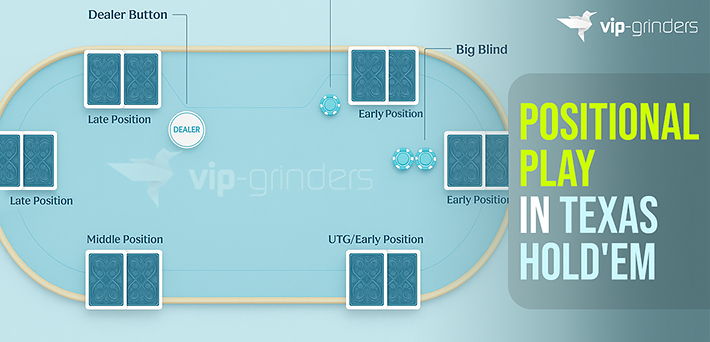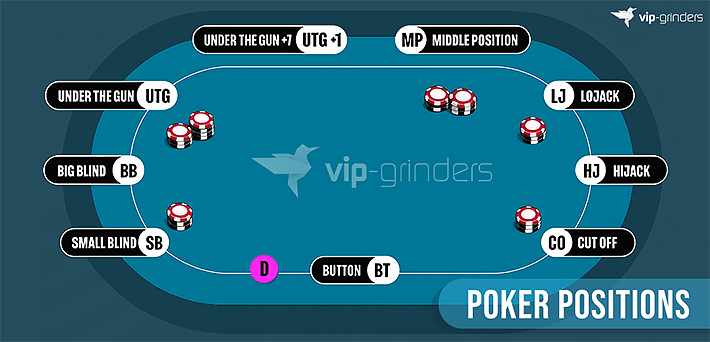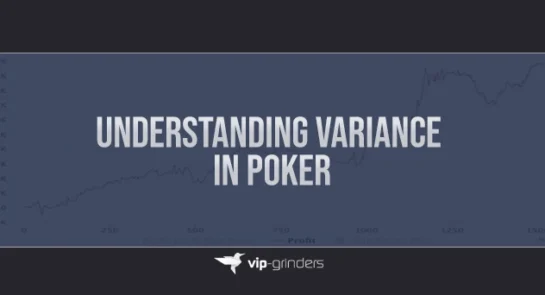Positional Play in Poker: Our Ultimate Guide
Positional play in poker is the single most powerful advantage (besides the deck hitting you in the face with Aces) you can have at a poker table. Position in poker is fundamental to poker strategy.
Acting after your opponents gives you more information, more control over pot size, and more opportunities to apply pressure.
This guide is a practical resource for serious players who want to master positional thinking, with a focus on Texas Hold’em: why it matters, what to do in each seat, and how to practice until position becomes instinct.

Why Positional Play in Poker Gives you the Biggest Edge
Information advantage
When you act last you see how opponents commit chips before you decide. That additional information reduces variance — you fold when others show strength and extract value when they show weakness.
Pot control and sizing
Position allows you to choose pot size. Acting last you can check back to keep pots small, or fire a controlled bet to charge draws. A well-timed small bet from position will often deny equity while keeping worse hands in and better hands thinking.
Pressure & fold equity
Being last to act multiplies fold equity. A button open forces out many marginal hands from blinds; a late raise in late stages forces decisions. Fold equity is the engine behind steals and resteals — the occasional freed chip is the foundation of tournament survival and accumulation.
Quick example — same hand, different seat
K♥J♦ on the button is far more playable than K♥J♦ UTG. On the button you can raise, see reactions, and exploit; UTG you open to a pile of callers behind. Position is the reason seemingly identical holdings can be +EV or −EV depending on seat.
Positional Seats Explained — What to Play and Why
Early position (UTG, UTG+1)
Goal: avoid dominated hands and preserve stack vs many players. Open very tight. In full-ring, treat UTG as commitment to value hands only. Preflop discipline in EP protects you from multiway disasters.
Middle position (MP)
Goal: add some strong connectors to your range while still avoiding marginal offsuit hands that perform poorly multiway. MP is where you begin to widen cautiously—mix suited connectors and broadways.
Cutoff (CO)
Goal: steal and isolate. The CO is powerful because only the button acts after you. Open wider and 3-bet more frequently here, especially if the button or blinds are passive.
Button (BTN
Goal: widen as much as your comfort level and table dynamics allow. BTN plays the most hands profitably. You can raise small, pressure blinds, and exercise maximum postflop leverage. Make the button your bread-and-butter seat.
Small blind (SB)
Goal: be cautious. SB acts before the BB postflop, which is a major disadvantage. Open only with hands you can play profitably OOP or hands that realize well (Axs, suited connectors) but be mindful of pot commitment.
Big blind (BB)
Goal: defend with equity and playability. You get a price to see the flop; defend 30–50% of hands vs late opens, but don’t auto-call with hands that play terribly OOP multiway. Use 3-bets as a balancing tool against frequent stealers.
| Position | Quick guideline (sample hands) |
|---|---|
| UTG | Open TT+, AKs, AKo |
| MP | Open 99+, AQ+, AJs+, KQs |
| CO | Open 88+, ATs+, KJs+, QJs |
| BTN | Open 55+, A2s+, K9s+, broadways, suited connectors |
| SB | Open selectively; defend with Axs, suited connectors |
| BB | Defend widely vs LP opens; 3-bet light vs aggressive stealers |
Note: For full numeric opening charts and solver ranges see our Beginner’s Hold’em Strategy page and Advanced Texas Hold’em Strategy section for more advanced concepts.

Positional Play in Poker: Preflop Tactics
Opening sizing by seat
- Default open:
- 2.0–2.5× BB from late position
- 2.5–3.5× from EP in live games where re-raises are common.
Keep opens smaller on the button to maximize steal frequency and preserve stack depth for postflop play. Small opens increase multiway risk but keep commit decisions cheaper.
3-bet strategy by position
- CO/BTN: 3-bet more often (polarized) — a blend of premiums and blockers (Axs, KQs) that serve as effective bluffs and have postflop playability.
- EP: be tighter; primarily 3-bet for value.
Stack aware: with 40–60bb, favor polarized 3-bets; at 100bb+, you can include some linear, speculative 3-bets.
Cold-calling vs 3-betting in position
In position (CO/BTN), cold-call more with suited connectors/small pairs to leverage implied odds. In EP, avoid flatting too much—use 3-bets to isolate when you have initiative.
Steal & resteal math (short note)
When antes are active, button opens become more profitable — even marginal hands win often. If a small raise costs 2–2.25bb into a pot of antes+blinds, your breakeven success rate is low; use that to widen steals.
Push/fold adjustments and position
Under 20bb effective, position matters less; push/fold dominates. Still, shoving from the button or CO has more fold equity than shoving from the SB or BB — use this to resteal hands wider from late seats.
Postflop Play with Positional Awareness
Flop play — Board Texture and Range Advantage
c-bet smaller (~25–33% pot) frequently.
- Wet or two-suited boards often favor callers; out of position (OOP) proceed cautiously and mix checks. In position, small c-bets deny equity cheaply.
SPR and Multi-Street Planning
SPR (stack-to-pot ratio) guides whether to commit.
- Low SPR (<3) means top pair or better can often be committed.
- High SPR (>7) means speculative hands (connectors, small pairs) gain value.
Plan before the flop: if you want to sometimes shove by river, size earlier bets to reach an SPR that makes sense for that plan.
Turn lines — Sizing and Story
Use turn sizes to shape river decisions. If you plan to barrel the river when missed, choose turn sizes that preserve fold equity. If you want all-in capitals, build the pot logically so jams make sense to opponents.
River — Thin Value and Balanced Bluffs
When last to act you can thin value-bet (small sizes) to target weaker calls. Practical rule: bet value when worse hands call, bluff when only better hands call.
Multiway pots — simplify ranges
Position advantage is different multiway: fewer steals, more pot control. Play straightforwardly—value-size more, bluff less, and avoid marginal second-best plays that create tricky turns.
VIP Grinder’s 3 Pillars of Positional Play in Poker
- 1If you raise in position and miss a dry flop, c-bet 30–35% most of the time.
- 2If you raise in position and face a check-raise, be more cautious unless you have strong equity.
- 3If you call preflop in position with a speculative hand, prioritize seeing cheap turns and river implied odds — avoid bloating the pot OOP.
Position in Tournaments vs Cash Games
Tournaments — Steal, ICM, and Bubble Dynamics
In tournaments, position gives more opportunity as antes arrive — widen steals and exploit tight blind play. However, ICM (Independent Chip Model) modifies your willingness to gamble.
Near bubbles or pay jumps, fold marginal hands despite positional advantages if survival yields greater real money EV.
Cash games — Deep Stack Leverage
Cash games reward postflop positional play because you can buy deeper stacks and extract implied odds over many hands. Play more speculative hands in position and utilize small sizing to induce calls.
Short-Handed & Heads-Up
Short-handed, position magnifies. Button/CO open very wide and use aggression. Heads-up, button aggression must be more frequent; positional play becomes the central skill.
Common Positional Mistakes & Fixes
Limping UTG or limp-calling too much
- Mistake: Limping into action loses initiative.
- Fix: Raise or fold preflop — only limp when specifically trapping or in multiway limp spots with a plan.
Over-betting OOP or betting too often into range-favored boards
- Mistake: Betting big when you lack range advantage.
- Fix: Reduce size or check more; let later streets re-evaluate.
Chasing marginal draws OOP
- Mistake: Calling down without implied odds or fold equity.
- Fix: Only chase when pot odds + implied odds justify or when you’re in position.
Under-stealing from late positions
- Mistake: Failing to use the button.
- Fix: Track opponents’ fold-to-steal % and widen BTN steals accordingly.
6-point checklist:
- 1Open size: Did I keep sizing appropriate to position?
- 2Preflop plan: Do I have a 3-street plan?
- 3SPR: Have I computed an SPR that matches my line?
- 4Opponent profiling: Who folds to steals? Who check-raises?
- 5Pot control: Should I check back to preserve stack?
- 6Exit strategy: When will I release to a shove or donk?
AI Summary TL;DR: Positional Play in Poker
- Early Position (UTG, UTG+1): Play very tight, focus on strong hands to avoid domination and multiway risk.
- Middle Position: Begin widening your range cautiously with suited connectors and strong broadways.
- Cutoff: Start stealing and isolating; open wider and 3-bet more frequently.
- Button: The most profitable seat, where you can play the widest range and exert maximum pressure.
- Small Blind: Play cautiously out of position, open selective hands with good playability.
- Big Blind: Defend broadly but with playable hands, use 3-bets to counter thieves.
- Early Position (UTG, UTG+1): Play very tight, focus on strong hands to avoid domination and multiway risk.
- Middle Position: Begin widening your range cautiously with suited connectors and strong broadways.
- Cutoff: Start stealing and isolating; open wider and 3-bet more frequently.
- Button: The most profitable seat, where you can play the widest range and exert maximum pressure.
- Small Blind: Play cautiously out of position, open selective hands with good playability.
- Big Blind: Defend broadly but with playable hands, use 3-bets to counter thieves.
Preflop tactics emphasize different opening sizes by position, using smaller raises on the button for steal frequency, polarized 3-bets in late position for bluffing and value, and tighter 3-bets in early position. Cold-calling suited connectors is more viable in position. Short stack push/fold dynamics lessen position impact but fold equity from late positions still matters.
Postflop play revolves around exploiting board texture, SPR (stack-to-pot ratio), and multi-street planning. Position allows for smaller c-bets on dry boards, cautious play out of position on wet boards, and precise turn/river sizing to thin value bet or bluff.
In tournaments, position is crucial for widening steals but must be balanced against ICM considerations near bubbles. In cash games, deeper stacks allow profitable postflop speculation in position. Short-handed and heads-up play demand aggressive, wide ranges from late positions.
Common mistakes include limping UTG, overbetting out of position, chasing weak draws without odds, and under-stealing. Drills and tools (HUD filters, solvers, equity trainers) help reinforce good positional habits.
Quick cheat sheet:
- Button: widest range, small open, steal often
- Cutoff: steal and isolate frequently
- Small blind: cautious approach
- Big blind: defend with playable hands
Position in Poker Drills, Tools & Practice Routines
Drill 1 — Button mastering
Play only the button for 200 hands over multiple MTTs/sessions. Track success rate on steals and postflop value extraction. This conditions steal lines and postflop exploitation.
Drill 2 — Big blind defensive
Sit in BB and force yourself to defend 30–50% of late open raises. Log hands that succeeded and those that failed; adjust defense ranges accordingly.
Drill 3 — Preflop plan checklist
Before each hand, write 1-2 lines of plan: preflop size, planned flop line, turn commitment points. Review mistakes after each session.
3 Tools to use
- HUD filters: fold-to-steal, fold-to-cbet, 3-bet vs position.
- Solvers: use GTO+ to extract two or three heuristics per spot (don’t memorize nodes).
- Equity trainers: Flopzilla / Equilab for range study.
Quick Reference — Position Rules (Cheat List)
- 1Understand the core concept of GTO and why it provides an unexploitable baseline strategy.
- 2Learn to balance your ranges and bluff frequencies to avoid predictability.
- 3Apply exploitative adjustments by reading opponents’ tendencies and adapting your strategy to maximize value.
Positional Play in Poker FAQs
How much wider should I open from the button vs CO?
Expect to open 10–25% more hands on the button relative to the CO depending on blind tendencies; monitor fold-to-steal stats and widen when they fold often.
How do I defend the big blind profitably?
Defend with hands that have good playability OOP—suited connectors, broadways, and medium pairs—while 3-betting light vs consistent stealers.
When should I 3-bet light from the cutoff/button?
3-bet light vs openers who fold to 3-bets often or when you can isolate a weak opener. Tightness of next seats and stack depths matter.
How does position change with stack depth?
With deep stacks you can call more in position (speculative hands). With shallow stacks (<25bb) prioritize shove/fold decisions and widen late position shoves.
How to practice position without a database?
Do seat-specific drills (button only, BB defend sessions) and keep a simple hand log (50 hands) noting result and key decision — iterate weekly.


















